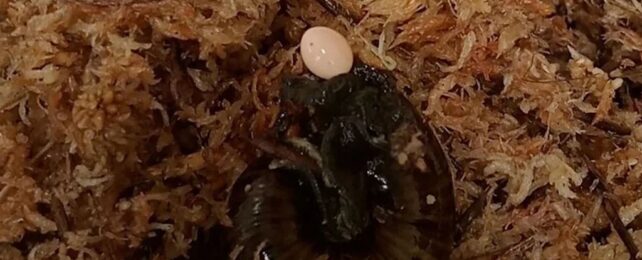If you thought human birth was seriously twisted, get a load of the Mount Augustus snail from New Zealand. This giant carnivorous gastropod pushes 5-millimeter-wide eggs out of a pore just below its head.
The pain-in-the-neck form of reproduction was recently caught on camera by Lisa Flanagan, a ranger at NZ's Department of Conservation (DOC), who has been caring for a captive population of these snails (Powelliphanta augusta) since 2006.
"It's remarkable that in all the time we've spent caring for the snails, this is the first time we've seen one lay an egg," says Flanagan.
"We caught the action when we were weighing the snail. We turned it over to be weighed and saw the egg just starting to emerge from the snail."

Powelliphanta are among the largest snails in the world, and they comb through NZ's forest and grasslands slurping up earthworms like spaghetti.
P. augusta is one of the more famous species (nearly 10 centimeters in length), and it was only discovered by the DOC in 2005, when most of the snail's habitat was subject to mining. The wild population is now confined to just a few introduced sites, where the snail hasn't lived historically, but a captive colony exists of roughly 2,000 individuals as a genetic insurance policy.

These are some of the longest-living snails in the world – some of the captive snails under Flanagan's care are between 25 and 30 years old.
"I just love watching their progress each month, weighing them, how their shells develop, and all the interesting things they do," says Flanagan.
While they usually lay around five eggs per year, starting from about the age of eight, this is the first time scientists in New Zealand have seen the egg-laying in action.
The species is a hermaphrodite, meaning each individual has male and female genitalia.
To mate, each snail pushes out a penis from its neck pore and pokes it into the pore of the other snail. Both individuals exchange sperm and then store it for later fertilization.
It is from this same neck pore that a fertilized egg later emerges.
Talk about evolutionary efficiency.
